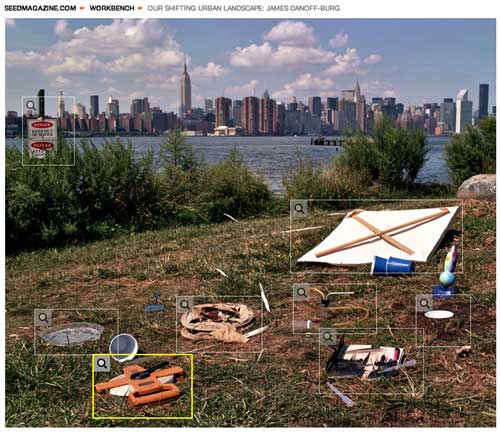
アメリカの子供たちはあまり虫とかをネットでつかまえません。このネットは、小川でも森でも使えます。たったの380円。楽しそうです。
Japanese kids love to use nets to capture small wildlife. This net can be used to capture kabuto mushi beetles on land, and also crayfish in creeks.

This small oak tree in my satoyama box is pushing out new leaves and flowers. I am a big fan of 5bai midori’s modular boxes full of native trees, bushes, and small plants. This box measures only 20 by 20 by 20 centimeters, yet it is full of plants and surprises. Some of them are evergreen, and it’s fun to watch the rest of the box revive in spring.
Update: I found the tag, and the tree is called konara in Japanese (コナラ). It’s an oak, with the Latin name (Quercus serrata). It’s a very typical Japanese forest tree, and its ample sap attracts good beetles like kabutomushi (カブトムシ). I wonder if we’ll get acorns out of this tree.

Via Twitter’s @tzuchiya, I discovered this amazing image and interactive feature in Seed Magazine that explains the toolkit of urban entomologist James Danoff-Burg. The Columbia University professor uses low-tech tools to investigate urban insects, including beetles and invasive ants. One surprising discovery: New York’s urban biodiversity correlates not with plant mass but with garbage.